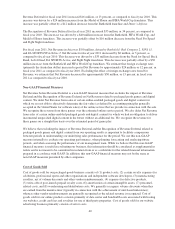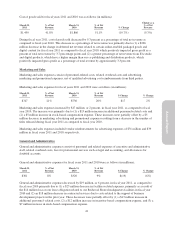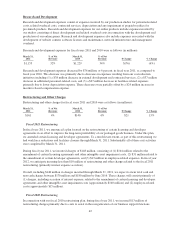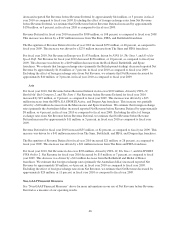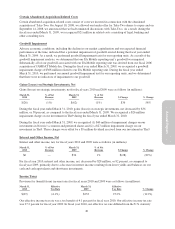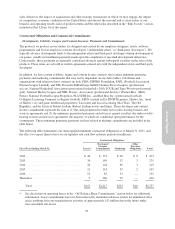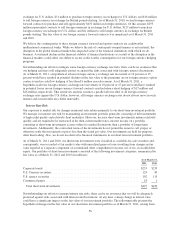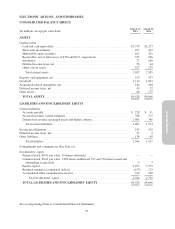Electronic Arts 2011 Annual Report Download - page 126
Download and view the complete annual report
Please find page 126 of the 2011 Electronic Arts annual report below. You can navigate through the pages in the report by either clicking on the pages listed below, or by using the keyword search tool below to find specific information within the annual report.
tax rate of 35.0 percent due primarily to U.S. losses for which no benefit is recognized, tax charges related to our
integration of Playfish, non-U.S. losses with a reduced or zero tax benefit and non-deductible stock-based
compensation expenses, partially offset by benefits related to the resolution of examinations by taxing authorities
and reductions in the valuation allowance on U.S. deferred tax assets. In fiscal year 2009, we recorded a tax
provision instead of a tax benefit on the pre-tax loss due primarily to the deferred tax valuation allowance. Our
effective tax rate in fiscal 2009 differed from the U.S. statutory tax rate of 35.0 percent due primarily to the
deferred tax valuation allowance, non-deductible goodwill impairment, non-deductible stock-based
compensation expenses, non-deductible losses on strategic investments, losses in jurisdictions with tax rates
lower than the U.S. rate of 35.0 percent, and a loss on facility impairment for which the future tax benefit is
uncertain and not more likely than not to be realized.
Impact of Recently Issued Accounting Standards
In October 2009, the FASB issued Accounting Standards Update (“ASU”) 2009-13, Revenue Recognition (Topic
605):Multiple-Deliverable Revenue Arrangements. This guidance modifies the fair value requirements of FASB
ASC subtopic 605-25, Revenue Recognition-Multiple Element Arrangements, by allowing the use of the “best
estimate of selling price” in addition to vendor-specific objective evidence and third-party evidence for determining
the selling price of a deliverable for non-software arrangements. This guidance establishes a selling price hierarchy
for determining the selling price of a deliverable, which is based on: (a) vendor-specific objective evidence,
(b) third-party evidence, or (c) estimates. In addition, the residual method of allocating arrangement consideration is
no longer permitted. ASU 2009-13 is effective for fiscal years beginning on or after June 15, 2010. We do not
expect the adoption of ASU 2009-13 to have a material impact on our Consolidated Financial Statements.
In October 2009, the FASB issued ASU 2009-14, Software (Topic 985):Certain Revenue Arrangements that
Include Software Elements. This guidance modifies the scope of FASB ASC subtopic 985-605, Software-
Revenue Recognition, to exclude from its requirements non-software components of tangible products and
software components of tangible products that are sold, licensed, or leased with tangible products when the
software components and non-software components of the tangible product function together to deliver the
tangible product’s essential functionality. ASU 2009-14 is effective for fiscal years beginning on or after June 15,
2010. We do not expect the adoption of ASU 2009-14 to have a material impact on our Consolidated Financial
Statements.
50


